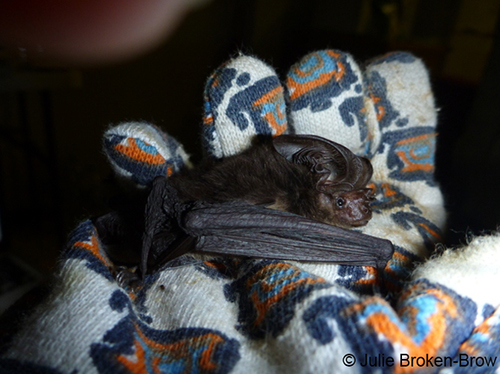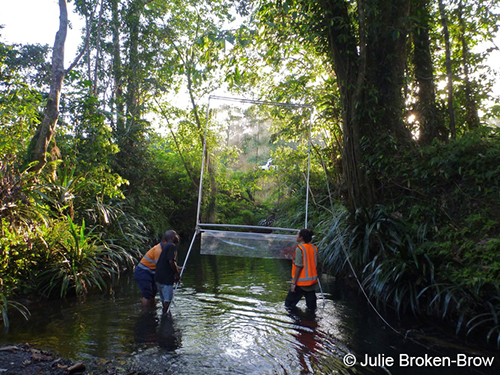Last month a research team from the University of Queensland rediscovered the New Guinea big-eared bat (Pharotis Imogene), EDGE Mammal #32, a species that has not been recorded since 1890. This elusive species, known from 45 specimens caught over 100 years ago, has long been presumed extinct as it is known from a rapidly changing area of Papua New Guinea.
In 2012 researchers Julie Broken-Brow and Catherine Hughes were carrying out a fauna survey in the Abau District of the Central Province of Papua New Guinea. One day when checking a number of bat traps they removed an individual they couldn’t easily identify. The pair decided to preserve the specimen and lodge it at the Papua New Guinea National Museum.
The specimen was not officially identified until March 2014, when it was loaned to the Australian Museum and Harry Parnaby and colleagues were able to confirm that it was the first New Guinea big-eared bat recorded for over a century.

Julie Broken-Brow told us “We are very excited to share our discovery with the global community. Papua New Guinea is such an understudied region, and our finding really highlights the importance of even basic fauna surveys.” Julie went on to say “Nothing is known about the species’ biology or ecology – only what we can assume based on its morphology, and it is really important that further studies into the now “rediscovered” species are undertaken.”
Papua New Guinea is a biodiversity hotspot that is under severe threat from rapid population growth and habitat loss. This discovery highlights how little is known about the region and how important scientific surveys are. In 2007 the Wildlife Conservation Society carried out a rapid assessment of the Hindenburg Wall area and discovered 89 new species of plants and animals.
The rediscovery of the New Guinea big-eared bat after 120 years is a hugely important development. It is now imperative that effective research and conservation is carried out to understand the current status of the species and ensure its future survival.
Click here to access the full research paper
Click here to learn more about the New Guinea big-eared bat.
